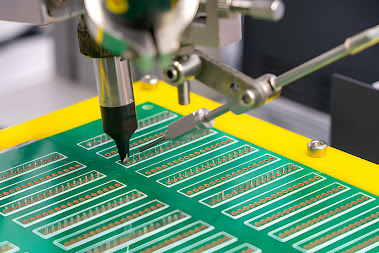Everything you need to know about printed circuit board prototypes
A printed circuit board, or PCB, is a piece of hardware that allows electronic components to connect and communicate with each other. The PCB serves as the foundation for most electronic devices, and is responsible for routing power and signals throughout the device.
x
When it comes to PCB prototypes, there are a few things you need to know. First, there are two types of PCB prototypes: quickturn PCB fabrication and full-feature.
Quickturn prototypes are suited to low-volume production runs, whilst full-feature prototypes are designed for high-volume production runs.
Secondly, there are several different forms of PCBs: single-sided, double-sided, and multi-layered. Single-sided PCBs have one layer of copper traces, while double-sided PCBs have two layers of copper traces. Multi-layered PCBs have between two to eight different layers.
Thirdly, the type of PCB you need depends on the complexity of your application. If you're just starting out, a single-sided PCB is a good place to start. As your project becomes more complex, you may need to switch to a multi-layered PCB.
Finally, there are several different fabrication methods for creating PCB prototypes: etching, milling, and 3D printing.
Etching is the most common method that PCB prototype manufacturers use, which utilizes a chemical bath to remove unwanted copper from the board.
Milling is a more expensive method, but it allows for more complex designs.
3D printing is the most contemporary fabrication method, and it has several advantages over etching and milling. 3D printed circuit boards are fully customizable. You can choose your trace width, board shape, copper thickness, pad size, drill hole size, and so on. And because you're dealing with a digital file instead of physical media, you can create custom PCBs in virtually any shape or design imaginable.
3D printed circuit boards are also extremely affordable, which makes them perfect for quickturn PCB prototyping. If you just require one PCB prototype to test out your idea, 3D printing is the way to go.
The prototyping process doesn't have to be expensive or complicated. Just remember that there are two different types of PCB prototypes: quickturn and full-feature, and that you can choose from three types of fabrication methods. Armed with this information, you'll be able to find the perfect solution for your next project.
For all of your PCB design software needs, Bay Area Circuit’s free PCB Layout and Schematic Capture software is the perfect solution.
PCB Creator is a design software program with integrated pricing and ordering options for creating between 2 to 4 layer custom PCBs. PCB Creator (Printed Circuit Board Creator) is simple to learn if you follow its step-by-step tutorial that can get users creating their own custom PCB design within only a few hours.
This circuit layout software has simple-to-use manual and automatic routing capabilities, as well as component and pattern editors that enable users to create their own components and footprints.
Users can then import and export their custom PCB designs and libraries with other EDA tools, use Schematic Capture, and preview their designs in full 3D.
For more information on Bay Area Circuits and PCB prototype services visit: bayareacircuits.com

Comments
Post a Comment